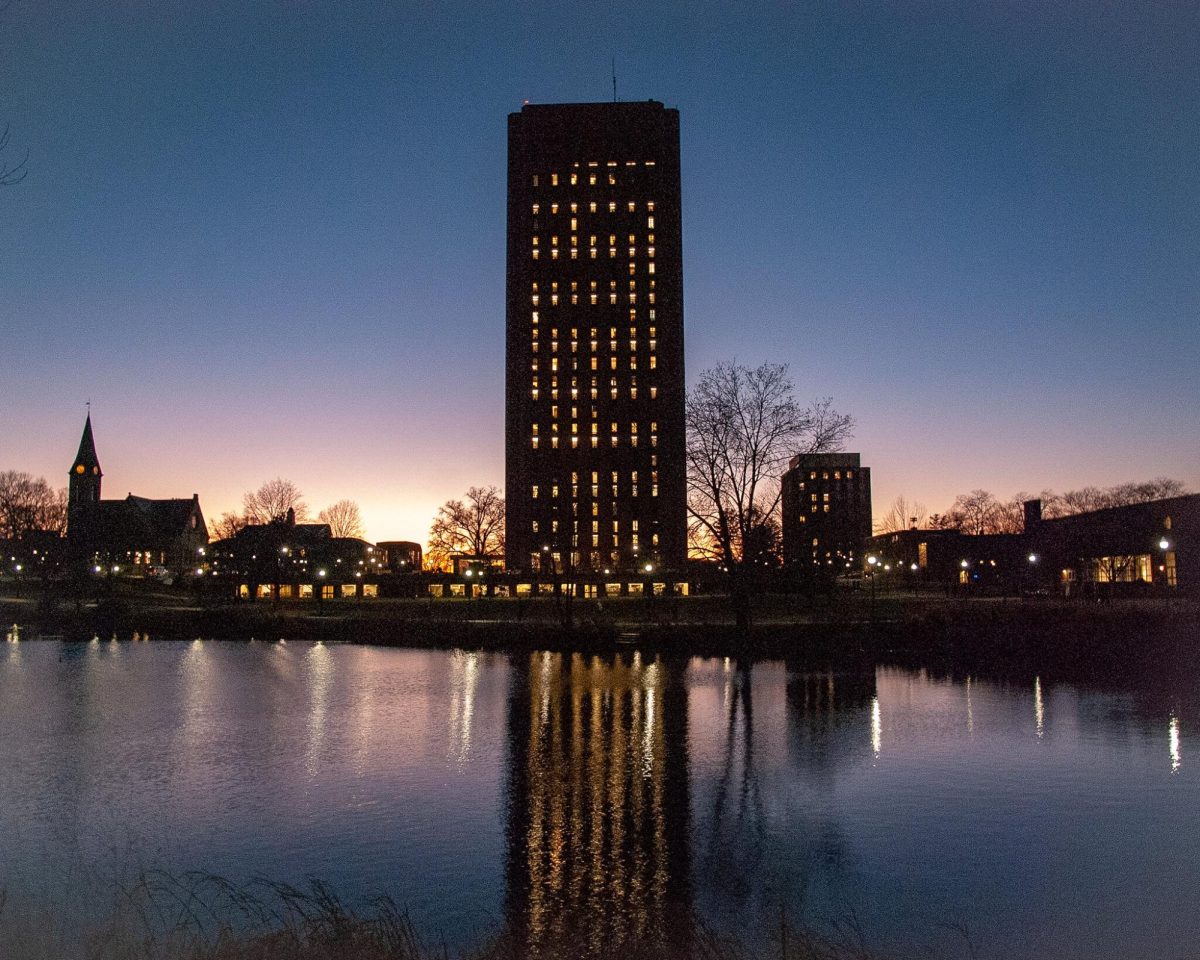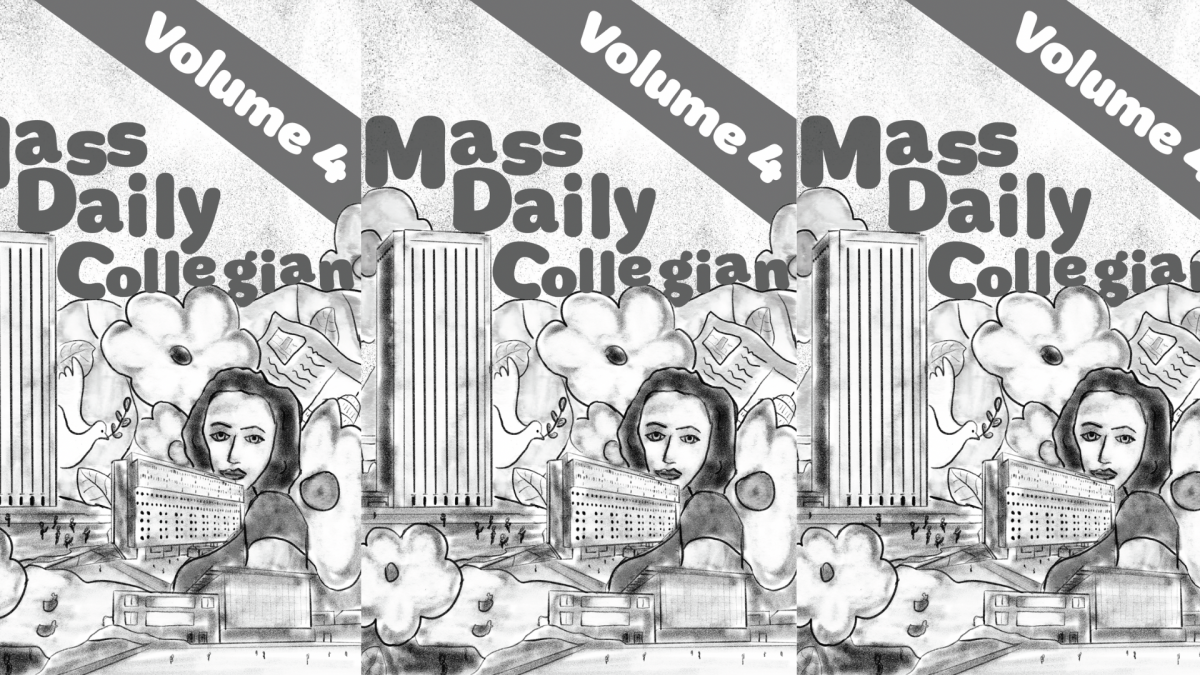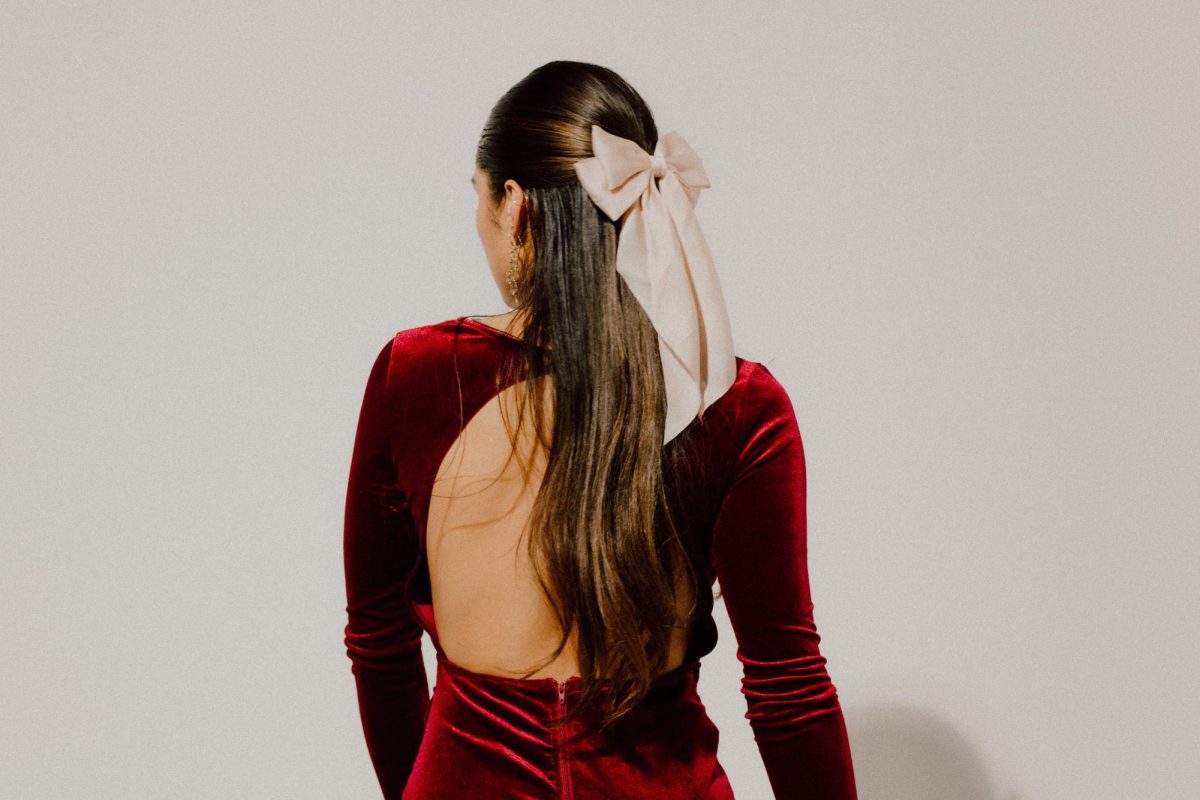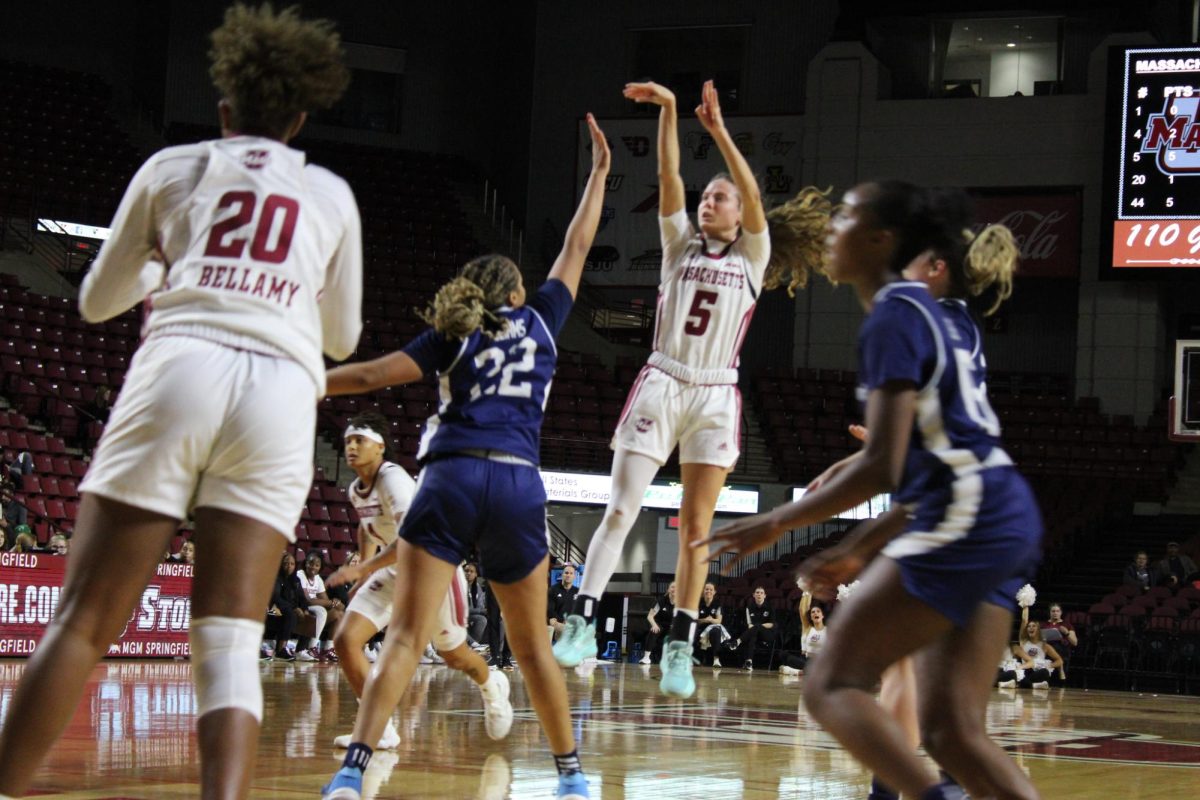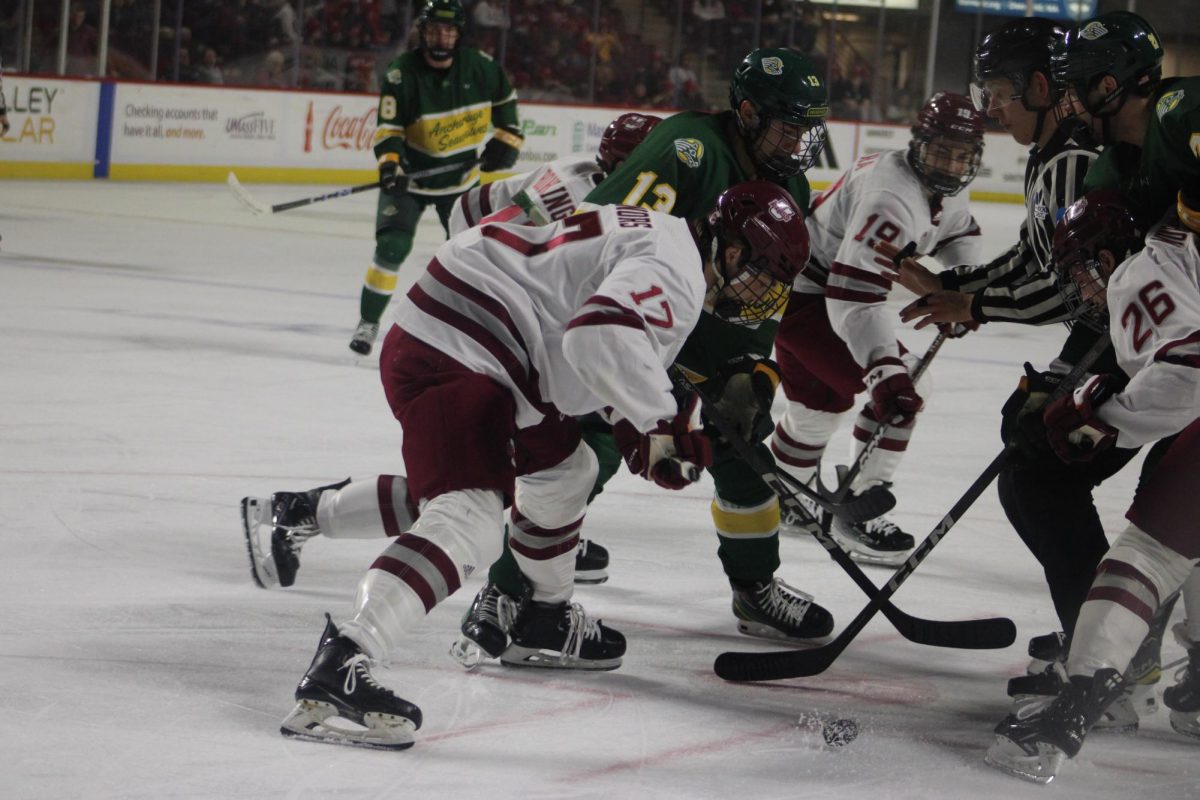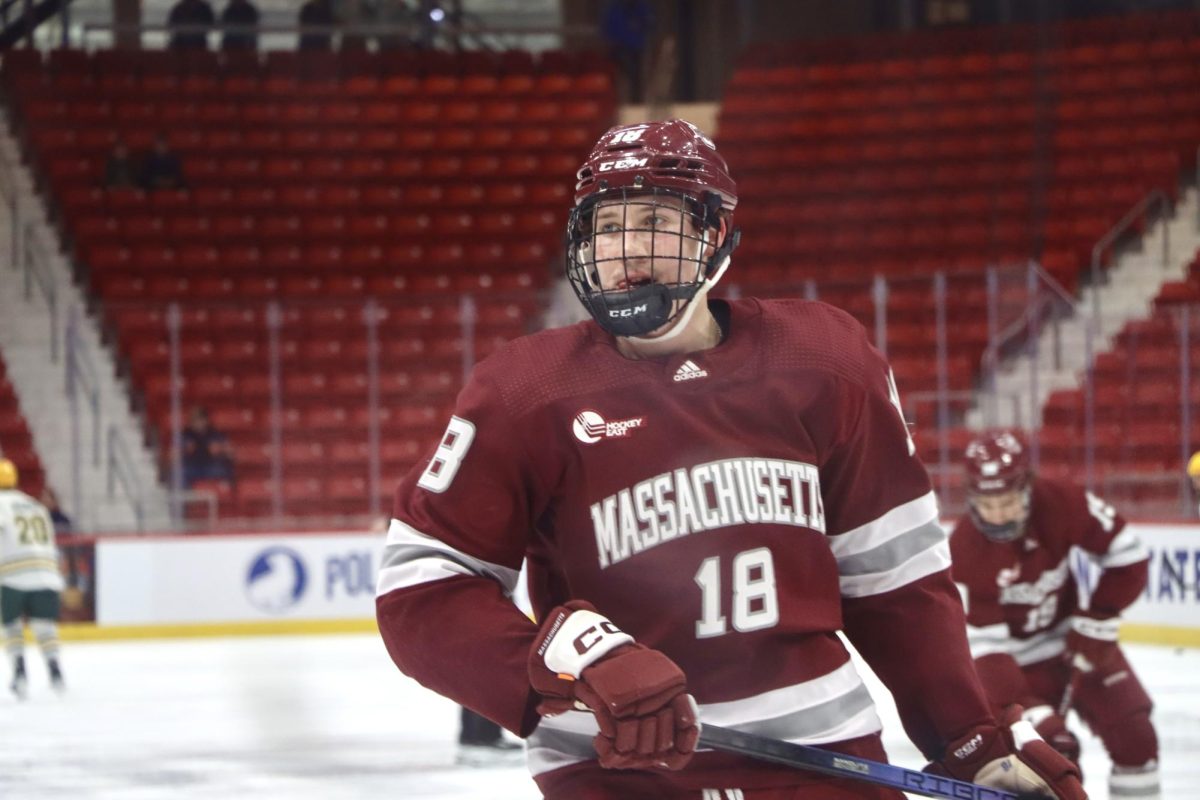On Thursday, Nov. 16, audience members sitting in the University of Massachusetts’ Bezanson Recital Hall eagerly awaited the unmistakable syncopated rhythms of the University’s Chamber Jazz Ensembles. Spanning across nine different groups, this annual spotlight served to showcase the hard work and musical talents of over 50 student musicians who all displayed passion for the art of jazz.
Saxophonist Brian Poirier Jr. opened the program with a bebop-styled piece entitled “Anthropology,” written and composed by Charlie Parker, a highly influential jazz musician in the mid-20th century. The piece later highlighted electric guitar riffs by Paul Boisvert, solos on the double bass by Paul Johnson and impeccable hits from drummer Aidan Supranowitz.
Immediately following, the scene switched to a quintet set up on the opposite side of the stage. This group, which consisted of saxophonists Andrew DiCicco and Max Wheeler, bassist Sean Thapa, pianist Jeremy Tob and drummer Miguel Gomba performed “Nica’s Dream” and “Perdido.” In the former, DiCicco and Wheeler began the tune by doubling the smooth melody together before Wheeler branched off into supporting harmony lines. Wheeler then moved into a quick-flowed solo, filled with ascending and descending swung lines. Tob kept the piano busy as he improvised on an array of motifs found throughout the piece. Thapa went next, moving effortlessly across the bass’s fingerboard. Finally, Gomba’s solo on the drums switched between rhythms on the snare, rim shots on the tom-toms and precise hits on the crash cymbal.
Eerie, oscillating rhythms from the soprano saxophone later filled the air as a jazz quartet composed of graduate students Matt Padula, Hugo Sanbone, Sean Riddle and Charlie Gorham took the stage. The four performed pieces entitled “Big Stretch” and “Ornetteish.”
“Big Stretch,” composed by bassist Riddle himself, originally began as a unique challenge. Riddle explained how one of his professors dared him to write a piece revolving around a melodic minor scale. Looking to step outside of the box and switch up stereotypical jazz band roles, Riddle gave the soprano saxophone a more supporting part and wrote melodic lines for the double bass and trombone to really accentuate the dissonance that encompasses a melodic minor scale. As the piece progressed, trombonist Sanbone and saxophonist Padula traded solos, eventually coming together so their respective rhythms clashed.
Riddle, who is currently pursuing a combined master’s program in music education and jazz performance, shed light on just how enjoyable “the freedom” of writing and performing jazz music can be.
“That was the big thing that drew me in when I first started playing in high school,” Riddle explained. “I can actually just create.”
“Ornetteish,” written by Padula, allowed Riddle to utilize the double bass’s full potential. In a normal jazz setting, a bassist plucks the strings to create strong basslines. Here, Riddle actually moves the bow across the strings, jumping intervals and sporadically lengthening the produced sound. Drummer Gorham eventually added a steady snare beat to the mix, while Padula and Sanbone played an identical, ascending melody.
Another group consisted of flutist Moriah Lichtenstein, saxophonist Nic Spodick, trumpeter Ian Behrstock, pianist Henry Bulduc, bassist Kamari Lindsey and drummer Andy Kivela. Performing well-known tunes such as Jarrett’s “Lucky Southern” and Billy Taylor’s cover of “I Wish I Knew How It Would Feel To Be Free,” this ensemble emphasized the independence and flexibility jazz music embodies.
Liechtenstein, a fifth-year music student at UMass, described how she had spent the previous four years studying flute performance with an emphasis on classical music. Intrigued in the essence and culture of jazz, Liechtenstein decided to spend her fifth year delving deeper into this unique art form. She went on to describe how pursuing the genre of jazz has allowed her to explore boundaries of music she hadn’t really been exposed to before.
“I totally love it,” Liechtenstein beamed. “It’s different.”
There were several jazz vocalists who also performed that night, such as Priscilla Dias de Carvalho, who sang the well-known Portuguese bossa nova “Chega de Saudade.” Teddy Janot later performed Horace Silver’s cover of “Song for my Father,” and Michael Filip sang “Hopelessly Devoted to You” by John Farrar.
To close the night, a nonet of graduate jazz composers performed a piece entitled “Sight,” composed by one of the graduate students themselves, bassist Forest Loomis-Dulong. Beginning with a smooth riff from Loomis-Dulong himself and the rest of the rhythm section, trombonist Sanbone entered on a growing melody before being joined by the rest of the ensemble. Throughout the duration of the piece, each individual instrument illuminated their musical individuality by incorporating swing tempos, syncopated beats and insane interval jumps.
Bass trombonist Justin Leach joined Sanbone in a countermelody as the two hit it off, playing simultaneously. Loomis-Dulong was showcased next in an extended solo, moving with ease from one fret to the next before blending back into the initial riff. Soon, the whole band was back, each instrument pursuing their own unique theme to add onto the overall melody.
That is precisely what makes the art of jazz music so inexplicably unique: its ability to embrace diversity, reinvent the norm, provide freedom, fuel desire and make dissonance significant. When each instrument in an ensemble is separated, they illustrate their own distinctive musical qualities through their respective solos. But, when incorporated together, the group creates a symphony of music whose influence lies far beyond the sum of its parts.
Erineah Quan can be reached at [email protected].

